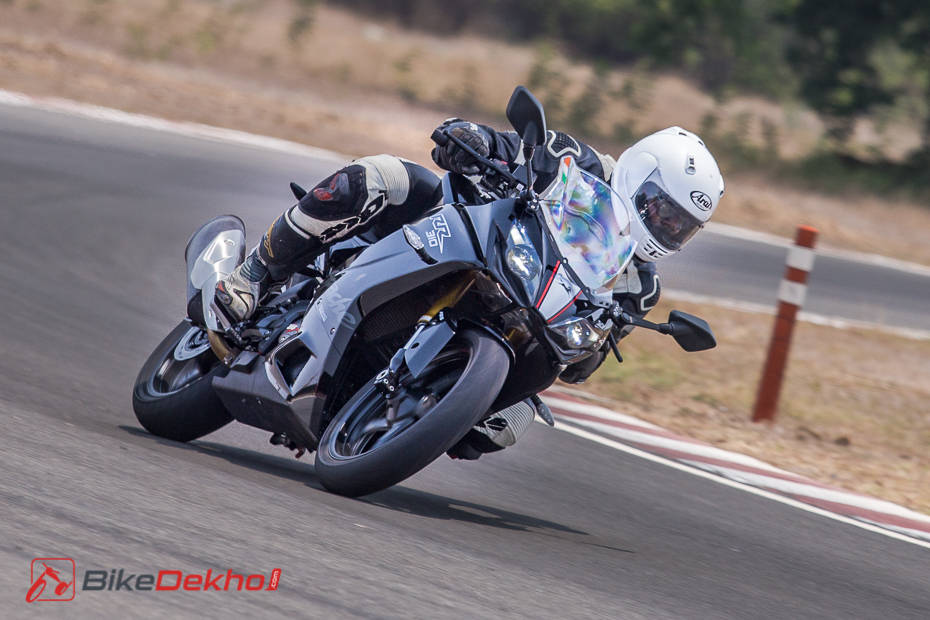Know Your Two-wheeler History: TVS Apache
Modified On Mar 12, 2020 04:42 PM By Praveen M. for TVS Apache RTR 160 4V
- 5167 Views
- Write a comment
Here's how TVS’ quintessential soul of sportiness evolved over the years

The TVS Apache range is well-known for all things sporty as far as the Hosur-based brand’s lineup is concerned. Millions of motorcycles under the Apache range have been sold from its inception in 2005. The motorcycles have found their way into the hearts of not only Indians but also riders from all over the world! And ever since its birth, the Apache range’s racing pedigree has always remained unfazed, and here’s how it evolved over the years:
Apache 150:

After TVS parted ways with Suzuki, its first 150cc motorcycle was the Apache 150. Launched in 2005, it really spiced up the performance-oriented 150cc segment which was then dominated by the venerable Bajaj Pulsar. It featured an intake and exhaust resonator to ensure quick acceleration.
With 13.6PS on tap, the motorcycle was claimed to offer the highest power to weight ratio in its class. It was also the first bike to get synchronised stiff chassis which was made from the lessons learnt by TVS Racing. The chassis has been one of the most crucial technological learnings for TVS as you can find its derivation even on today’s Apaches.
Apache RTR 160 & 180:

Around two years later, TVS replaced the 150cc Apache with the new Apache RTR 160. Armed with a more powerful oversquare short-stroke engine, the motorcycle offered rev-happy performance and was, in many ways, much better than the first generation model. This was followed by the introduction of FI variant which made it the only bike in its segment to be equipped with one.
It was followed by the Apache RTR 180 in 2009 equipped with a rebored version of the 160’s engine. This gave it enough firepower to go up against the Bajaj Pulsar 180. Its petal disc brakes were already tuned for a balance of bite and progression. But, TVS went a step ahead and introduced a dual-channel ABS variant of the motorcycle two years later. It was the first ABS-equipped bike made in the country and even many years later, it still remained the most affordable dual-channel ABS-equipped motorcycle in the Indian two-wheeler market.

The Apache twins’ began to show their age amidst more modern competition, so TVS finally gave the two motorcycles a much-needed facelift in 2012. The new versions featured a redesigned headlight with LED DRLs (a first in the Apache lineup), chiseled fuel tank extensions which not only looked sporty but also claimed to reduce the engine heat to an extent.
Then with the advent of new safety norms, TVS updated the Apache RTR 160 with single ABS this year. Even the RTR 180 was downgraded to a single-channel ABS, presumably due to cost constraints.Apart from the introduction of ABS, the motorcycles’ mechanicals remained unchanged.
Apache RTR 200 & RTR 160 4V:

TVS unveiled the sharp looking 250cc Draken concept at the Auto Expo back in 2014. This was followed by its production version called the Apache RTR 200 4V in 2016. Back then, the RTR 200 was TVS’ flagship product replete with split-type Synchrostiff chassis, completely new design language and an air cooled 197.75cc single-cylinder engine with oil cooler. It was also the first TVS production motorcycle to be equipped with a monoshock at the rear.
In the subsequent years, the Apache RTR 200 was then updated with fuel injection, slipper clutch and ABS. Recently, the Hosur-based brand launched the Bluetooth-equipped, smartphone compatible variant - a perfect motorcycle for the tech-savvy millennials.

The RTR 200 4V gave rise to its smaller sibling, the Apache RTR 160 4V in 2018. This was TVS’ first streetfighter in the 160cc segment and with this motorcycle, the brand was finally able to compete against the likes of Suzuki Gixxer, Yamaha FZ and Honda CB Hornet 160 R. Even though TVS took its own sweet time, the result was worth it as the RTR 160 4V was not only powerful but also more fuel efficient than its rivals.
Apache RR 310:

TVS set its sights on the global two-wheeler market and was aware that the small-capacity Apache motorcycles alone simply wouldn’t cut it. It needed a product with sound engineering and healthy performance at a nominal cost, so the bikemaker partnered with BMW Motorrad. This was a win-win arrangement as it also helped the German marque penetrate the lucrative smaller-capacity motorcycle segment. So after the launch of the BMW G 310 twins, TVS finally introduced their desi cousin, the Apache RR 310 in December 2017. Its ravishingly beautiful design was tempered with modern technology like twin projector LED headlamps, an information laden instrument cluster and more importantly, a performance-packed liquid-cooled engine.

It also featured top-notch underpinnings like a fat gold-finished inverted fork, rear gas-charged monoshock, petal discs on both ends with a radial front caliper. The only Achilles' heel of the motorcycle was the engine vibrations but TVS sorted it out with subsequent updates, and the brand also offered to fix the issue for existing customers. In terms of dynamics, the only thing the bike lacked was a slipper clutch, which TVS introduced in May this year.

With fast depleting fossil fuel reserves, the importance of vehicles running on alternative sources of energy is slowly gaining momentum. TVS experimented ethanol technology by unveiling the Apache RTR 200 Ethanol variant at the 2018 Auto Expo. The brand even launched the production version recently, but its availability is pretty limited to select states.
Even the electric vehicle segment is gaining popularity in recent times. Ultraviolette, a TVS-backed startup recently launched the F77 naked electric motorcycle. We can't help but wonder if TVS will introduce an electric motorcycle in the future. How cool will an electric naked version of the Apache RR 310 be!
